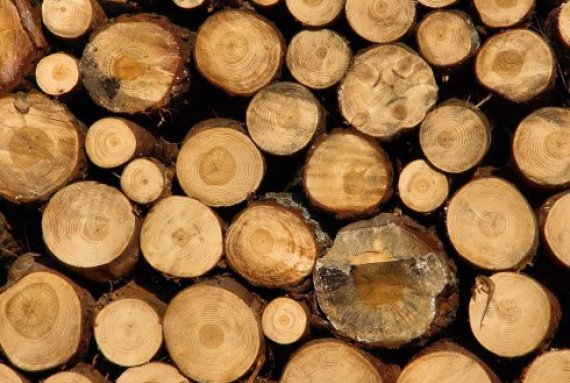Burning wood rather than fossil fuels is climate-neutral. A good idea then? Well, no, not entirely, it turns out from a study by Alterra and the Netherlands Environmental Assessment Agency. It seems so straightforward. Wood is biomass, or captured CO2. When wood is burned that CO2 is released. But if you plant new trees, more CO2 is captured. Overall it is therefore an emission-neutral and therefore a climate-neutral process. But it is not as simple as that, explains Eric Arets of Alterra. There are two complicating factors.
The first is the time factor. Quite some time passes before a newly planted young tree can capture as much CO2 as an adult tree that has been felled for fuel. ‘Initially, then, you get a big dip in the absorption rate of CO2,’ says Arets. Moreover, burning wood generates more CO2 per unit of energy than burning fossil fuels. This is because of differences in the efficiency of the burning process, which can be considerable. Gas, for example, produces 70 percent fewer emissions than wood.’
‘So you can’t just assume that burning wood is climate-neutral,’ says Arets. Scientists call these (to some extent temporary) extra emissions the carbon debt. A debt that you can pay off: young trees will eventually grow to full size, after all. How long that takes depends on many factors: which species of tree you use, whether you burn waste wood or primary wood, how the forest is managed and when the trees are felled. And this makes the whole question pretty complicated.
It’s better to use waste wood. But there are some catches to that as well
Eric Arets
Arets and his colleagues calculated the carbon debt. The range is massive: paying off the carbon debt can take anything from a couple of years to more than a century. The latter is the case when tracts of forest are felled or thinned exclusively for fuel. So might it be better not to burn wood at all? Arets: ‘I couldn’t say that. It depends so much on the circumstances. On what the forested land would otherwise be used for. It is very difficult to capture that in simple indicators.’
You certainly shouldn’t burn primary wood, though: Arets is clear about that. ‘It’s better to use waste wood. But there are some catches to that as well. Dead wood lying in the forest has an important ecological function of its own. There are other aspects involved besides the CO2 issue.’ The best advice Arets can offer is to use wood smartly. ‘First as valuable building material and for other purposes, and only in the last place as fuel. The government could stimulate the use of wood in construction, for instance.’

